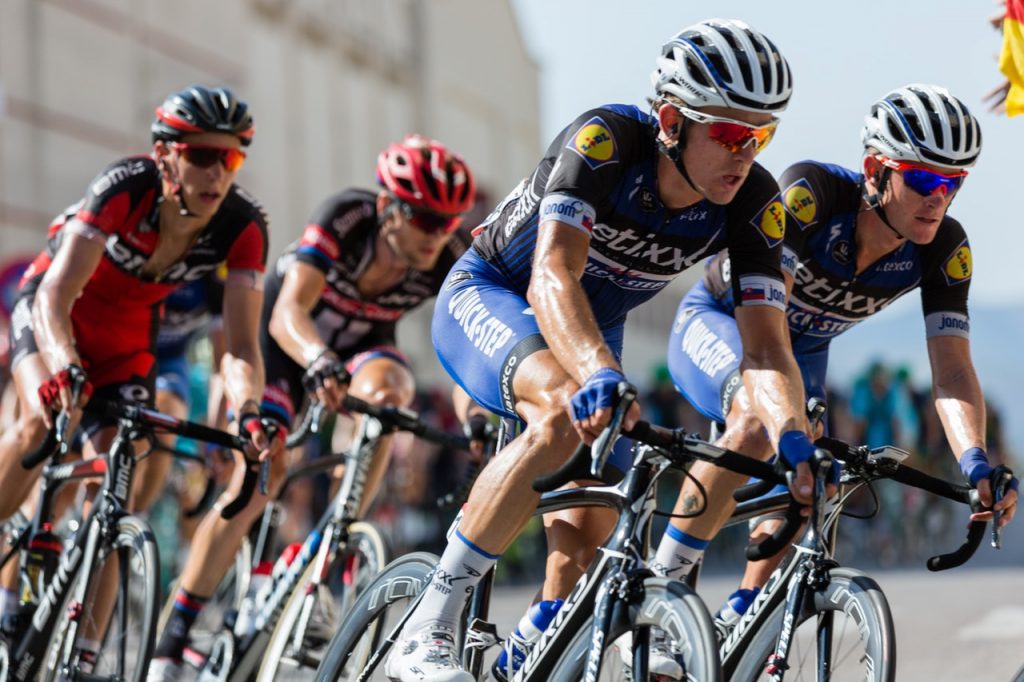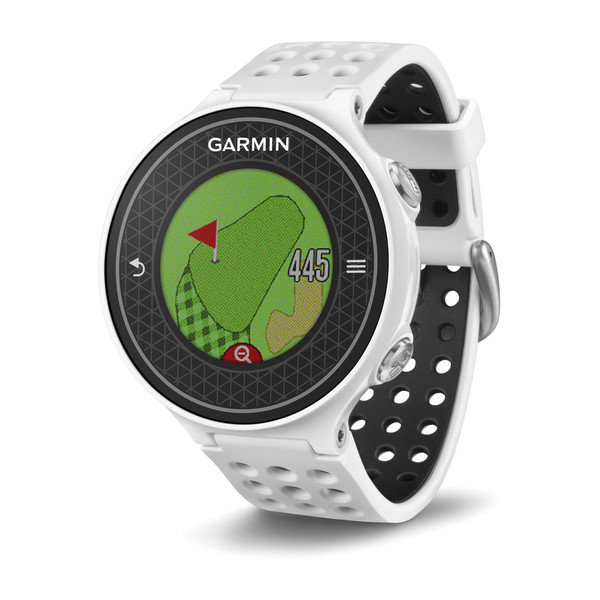When choosing a fitness tracker or activity monitor, you will be faced with several options. That shouldn’t be all that surprising considering there are so many devices on the market these days. The hundred-dollar question is, how do you choose between them? How do you know in a matchup between Fitbit vs Garmin, for instance, which is better?
Even when looking at a single brand — like Fitbit, for example — there are many different models and variations.
The best thing to do is to start with a broad choice and work your way in. We recommend choosing from two of the most popular brands: Fitbit and Garmin.
Hardware Comparison

The easiest way to decide between the two brands is to classify your habits and activities. That will determine which hardware is the better choice. Why?
Because generally, Garmin tends to offer devices aimed at athletes overall, or people who specialize in a specific sport. Fitbit, on the other hand, tends to focus on casual users or people who work out in their spare time.
At this point, you’re probably wondering what’s the difference?
Athletes usually spend a lot more time honing their craft, out in the field and are therefore exposed to more extreme conditions. Also, because they’re trying to excel, they need much more precise and accurate stats.
A casual user, conversely, is more focused on getting exercise and staying healthy. They’re not necessarily aiming to be the best of the best, and so they might not care as much about accuracy. They may also have different requirements in regards to hardware, such as not needing a higher water-resistance rating.
| Sports Tracking | Fitness Tracking | Price | Battery Life | |
| Fitbit | Modes: Run, bike, weights, etc. | Track steps, heart rate, pace, distance, calories burned, floors climbed, active minutes, hourly activity, sleep & stationary time. | $50 – $230 | 7+ Days |
| Garmin | Specialized Devices: Forerunner (running), Swim series (swimming), Approach Series (golf), Climbing, Hiking, etc. | Multi-sport, including steps, calories, distance, active time, and much more | $70 – $600+ | 7 Days – 1 Year+ |
Almost all Garmin devices are designed to meet stringent restrictions, report highly accurate data and adhere to a particular activity. Swimmers, for example, might grab a Garmin Swim series device that’s suitable for use in the pool or open water.
Sports Tracking

If you’re looking for detailed tracking for a particular sport, you might consider Garmin’s targeted wearables. Here are a few examples. Most of the Forerunner devices include GPS support and are meant for runners. The company’s Instinct series has a more rugged design for climbing and hiking. The Swim series is meant for swimmers. All of the specialized models include tracking functions for the activities they’re aimed at.
Ultimately, the sports tracking features favor Garmin’s lineup. Fitbit’s devices — such as the Ionic smartwatch and Charge series — do offer dedicated sports modes for running, cycling and some other activities, that’s about it. Most of Fitbit’s tracking includes only common stats like distance traveled, steps walked, calories burned and heart-rate for select models.
The company has branched out a little more with some of its newer iterations. For example, Fitbit now has four devices – the Flex 2, Charge 3, Ionic and Versa – that can tolerate swimming.
What all this means, or rather the point is that if you’re into extreme or specific sports you’d be better off choosing a Garmin device. If you’re into more casual activities then a Fitbit would be more suitable.
Fitness Tracking

When it comes to measuring up Fitbit vs Garmin for fitness tracking support, they’re about equal. Devices from both brands are fully capable of tracking common stats like calories burned or distance traveled. The more important consideration is how this information is presented and organized on the app side of things. When you open up the mobile apps to see your progress, in other words, is the interface attractive and readable?
Fortunately, both Garmin and Fitbit offer suitable companion apps. The information is always presented at a glance and you can delve deeper into the particulars if you want. Garmin offers much more nuanced statistics, of course, simply because its devices are capable of tracking specific activities.
As for the accuracy of the stats, again they are about equal. The exception would be heart-rate and vitals tracking when a chest strap or more direct monitor is used. Specialized monitors made for tracking heart-rates are always going to be more accurate than a wrist-based reader. The same is true for blood pressure, blood sugar and similar stats.
Also, most of Fitbit’s devices do not track heart-rate and when they do it’s not exactly accurate. If it’s heart-rate specifically that you’re looking to keep an eye on, you’d be better off with a Garmin device that syncs up with a chest strap or something of equal caliber.
Sport Specific Training

For individual sports like golf, soccer, hiking, swimming, and so on, the winner in the Fitbit vs Garmin debate is clearly the latter.
You will always be better off choosing one of Garmin’s targeted models, depending on the activity or sport in question. Golfers will want to have a look at the Garmin Approach series. Swimmers should refer to the Garmin Swim series. Runners to the Forerunner series. Hikers and climbers to the Instinct series. You get the idea.
If you’re a renaissance man or woman that’s into a lot of different hobbies and activities, Garmin may still be the better choice. The brand’s specialized devices are more expensive, but they tend to include more accommodating features and designs, like GPS tracking or waterproofing. If the price is an issue and you don’t care about all the extra tracking functionality, then Fitbit would be just fine.
The best way to decide between the two is to consider the sport or activity you are most interested in. If there isn’t one, then your options are much more open.
Pricing

In regards to their smartwatch devices, Fitbit and Garmin are about equal in pricing. Though Garmin does offer much more specialized devices like those made for golfers, swimmers and more.
Garmin’s targeted wearables — such as the Forerunner 935 for triathlon runners — tend to be much more expensive.
It is worth noting that both companies also offer devices for generalized audiences. Garmin’s Venu smartwatch is meant for all-day use even by non-athletes. Fitbit’s Versa series smartwatches are the same. Again, they tend to be equal in pricing sans any ongoing deals.
Where the two brands truly differ is when it comes to their casual fitness bands and trackers. Fitbit tends to be on the lower or cheaper end of the price spectrum compared to Garmin. Despite the feature sets of said devices being relatively equal.
| Fitbit Versa Lite Smartwatch | Garmin Vivomove Series | Fitbit Versa 2 Smartwatch | Garmin Fenix 6 Series |
| $159.95 | $249+ | $199.95 | $599+ |
Feature Comparison

Both Garmin and Fitbit offer a variety of devices, some with more features than others. For example, if you get one of Garmin’s casual fitness bands — like a Vivosmart — they’re going to track a lot less than one of the more expensive models.
To this end, it’s tough to compare Fitbit vs Garmin at least on a general level.
| Activity Tracking | Sports | Heart-Rate | Sleep | GPS | Smart Sync | Water-resistance | |
| Fitbit | ☑ | Modes | ☑ | ☑ | ☑ | ☑ | ☑ |
| Garmin | ☑ | Specialized Models | ☑ | ☑ | ☑ | ☑ | ☑ |
Some of the common features offered by these devices include:
- Activity tracking (steps, calories, sports, etc)
- Heart-rate monitoring
- Sleep tracking
- Built-in GPS
- Smartphone connectivity and mobile alerts
- Water-resistance or waterproofing
Both brands do a good job of offering all the features one would need for a particular device. Someone grabbing a Fitbit Alta, for example, isn’t necessarily going to care about tracking Tennis or Soccer-related stats, however, sleep tracking would be beneficial — and Alta does that. In comparison, Garmin’s rugged devices meant for the outdoors include GPS to track current location, while some of the Forerunner devices include support for storing and listening to music during a long run. They have the features you’d expect would be necessary for the activity you’re interested in.
Battery life and Charging

If you strictly look at battery life, the Fitbit vs Garmin debate is settled quickly. As a general rule, most of Garmin’s devices will have a vastly superior battery life, hands down.
For instance, the Garmin VivoFit 4 will last for about 12 months on a single battery cycle, as opposed to 7-10 days for Fitbit’s Charge 3. There is a caveat to the VivoFit’s extended battery life, however. The VivoFit 4 uses two SR43 cell batteries, which must be replaced compared to the rechargeable battery in Fitbit’s Charge 3. If you don’t want to deal with swapping out batteries then you might consider Charge 3 as the better option.
At this point, you can see the Fitbit vs Garmin debate largely banks on personal preference, provided you don’t have specific requirements for your wearable(s).
Do you currently own a Fitbit or Garmin device? Have you used both? What’s your preference and why?
